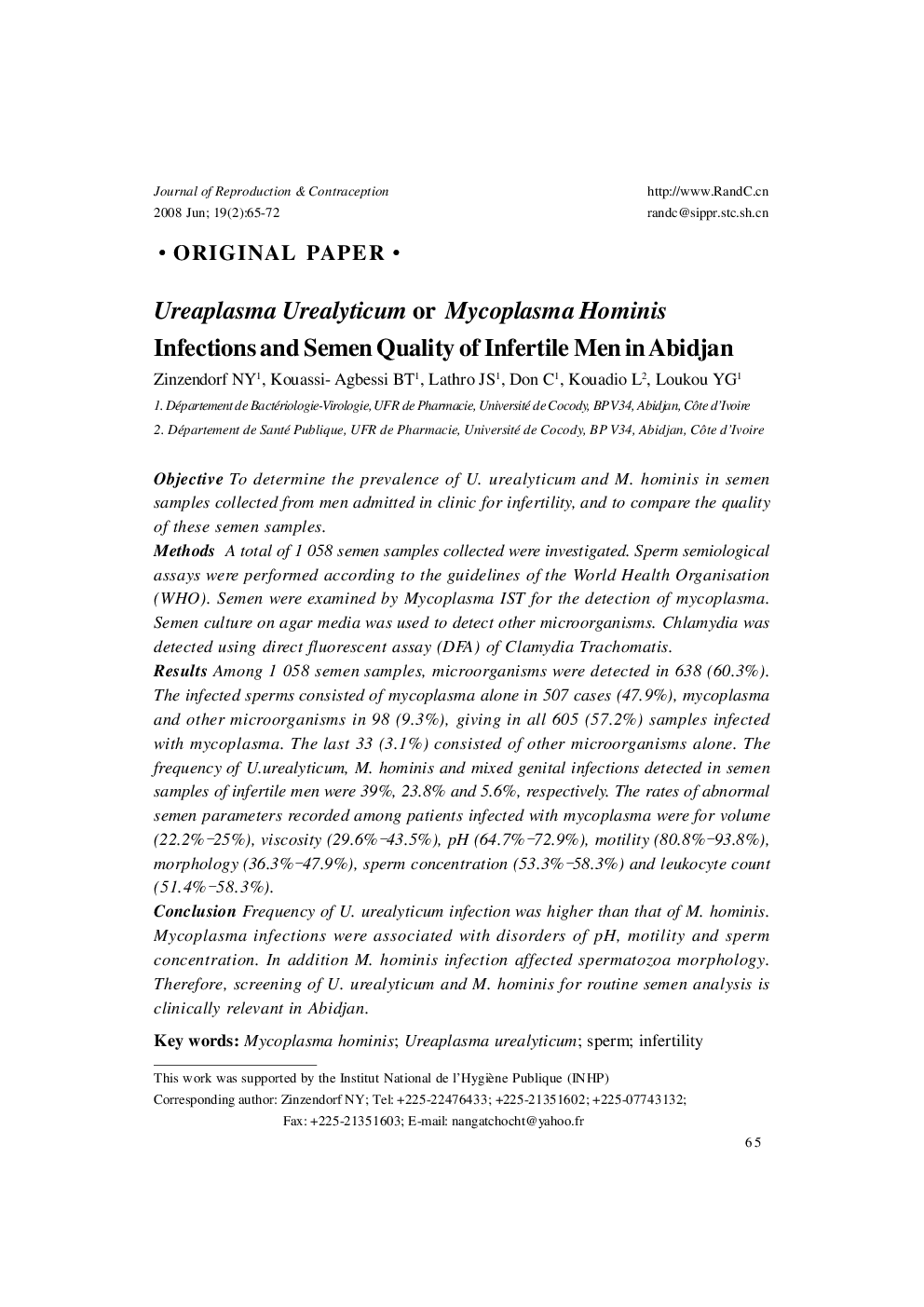| Article ID | Journal | Published Year | Pages | File Type |
|---|---|---|---|---|
| 3964089 | Journal of Reproduction and Contraception | 2008 | 8 Pages |
ObjectiveTo determine the prevalence of U. urealyticum and M. hominis in semen samples collected from men admitted in clinic for infertility, and to compare the quality of these semen samples.MethodsA total of 1 058 semen samples collected were investigated. Sperm semiological assays were performed according to the guidelines of the World Health Organisation (WHO). Semen were examined by Mycoplasma IST for the detection of mycoplasma. Semen culture on agar media was used to detect other microorganisms. Chlamydia was detected using direct fluorescent assay (DFA) of Clamydia Trachomatis.ResultsAmong 1 058 semen samples, microorganisms were detected in 638 (60.3%). The infected sperms consisted of mycoplasma alone in 507 cases (47.9%), mycoplasma and other microorganisms in 98 (9.3%), giving in all 605 (57.2%) samples infected with mycoplasma. The last 33 (3.1%) consisted of other microorganisms alone. The frequency of U. urealyticum, M. hominis and mixed genital infections detected in semen samples of infertile men were 39%, 23.8% and 5.6%, respectively. The rates of abnormal semen parameters recorded among patients infected with mycoplasma were for volume (22.2%–25%), viscosity (29.6%–43.5%), pH (64.7%–72.9%), motility (80.8%–93.8%), morphology (36.3%–47.9%), sperm concentration (53.3%–58.3%) and leukocyte count (51.4%–58.3%).ConclusionConclusion Frequency of U. urealyticum infection was higher than that of M. hominis. Mycoplasma infections were associated with disorders of pH, motility and sperm concentration. In addition M. hominis infection affected spermatozoa morphology. Therefore, screening of U. urealyticum and M. hominis for routine semen analysis is clinically relevant in Abidjan.
